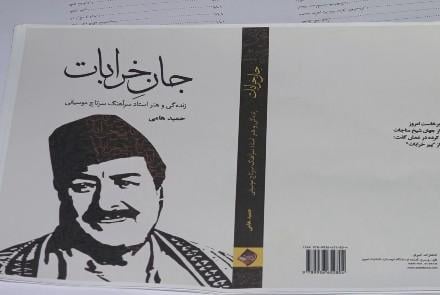Mohammad Husain Sarahang, "the crown of Afghanistan’s music" – a title given to him after his death-- passed away 39 years ago in Kabul.
He learned music first from his father and then pursued higher studies in music in India for 16 years.
Ustad Sarahang was 65 years old when he died. He was awarded many medals and earned many nicknames for his magical ghazal songs that were mostly based on Indian poet Abdul Qadir Bedil’s poems.
Kabul's Kharabat Street is his birthplace, an area that once housed Afghanistan’s famed and most loved musicians, maestros and singers, many of whom had followed their ancestors in the pursuit of music.
Today, the street houses a small number of families of composers.
“They were very nice people. They were a blessing. Now, nothing is there,” said Abdul Tawab Nisari, Sarahang’s nephew.
The home where Sarahang was born is still there in the narrow street where prominent musicians and maestros would get together at night after dinner to listen to music, sing Ghazal songs and get advice from their elders – who all were big names in classic Afghan music.
“The maestros are no longer here. There are some of their grandsons, but they are living in fear,” said Mohammad Nadir Wahidi, Sarahang’s cousin.
“Sarahang was one of the best classic music singers in the region and his contributions will never be forgotten. What still remains to be done for his legacy--our hope--is that a school should be inaugurated for him,” said Sharif Ghazal, Sarahang’s nephew who performed with him in the 1970s.
The "crown of Afghanistan’s music" and the "high mountain of music" were the nicknames given to Mohammad Husain Sarahang. He performed many concerts outside the country and was very famous for his song “Shaad Kun Jaan-e-Man Ke Ghamgin Ast,” which means “make me happy as I am upset.”
One of his songs was used for an Afghan movie, Mard Ha Ra Qawl Ast (Men Keep Their Promises).
Hameed Hami, a friend of Sarahang, has written a book on Sarahang’s life and career in music. The book is to be published soon.
Hami, the writer, said there is a story behind the name Sarahang given to Mohammad Husain. The name was given to him by a dervish and the man predicted Sarahang’s artistic life when he--Sarahang--was three years old.
“He predicted it. He predicted that he (Sarahang) will be the leader among all musicians,” Hami said.
Sarahang passed away 39 years ago on Sunday when he was 65-years-old. He was buried in Kabul.



Comment this post